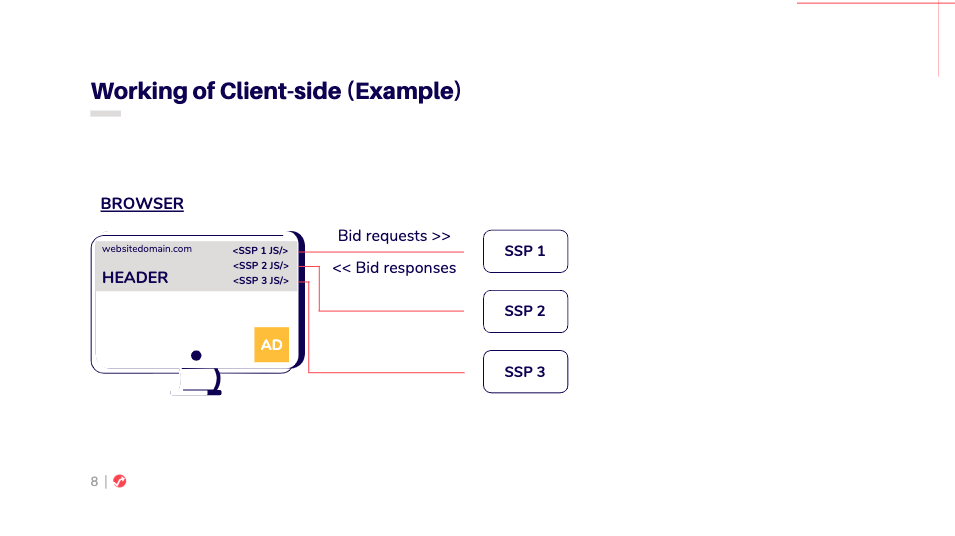Header bidding as a subject matter has always prompted question marks. Though the technology has been around for almost five years, the industry, including publishers, buy-side, sell-side, webmasters, and others are still keen to learn more about it.
In our last webinar with Stuart Moncada, VP of Products at Ad-Juster, we discussed the evolution of header biddingㄧfrom being a much-needed successor to the old waterfall method, to taking the form of the advanced client-side and server-side types, to finally introducing the hybrid approach.
From Waterfall to Header Bidding
To begin with, Stuart demonstrated how ads were sold earlier using the traditional waterfall auction where each bid request was passed from one bidding partner to the other one-by-one.

Followed by which, Stuart explained how the buying and selling of impressions happens more efficiently now with header bidding. A noteworthy point Stuart explained was that header bidding is not just a quicker process than the manual waterfall, it also opens the opportunity for publishers to touch higher bid values, which used to be a challenge.

The Wrappers
Most of the industry is probably familiar with the term ‘wrappers,’ however many still don’t understand exactly how they work. On that note, Stuart explained how header bidding wrappers work with client-side and server-side, along with the differences between the two.


When we discuss client-side and server-side together, it’s quite obvious for viewers to ask, “How are they different and what do they have to offer?” During his talk, Stuart highlighted the advantages and disadvantages of both the types. He also emphasized on the fact that the pros and cons of both client-side and server-side go hand-in-hand.
Client-side vs. Server-side
While the client-side header bidding offers better transparency and cookie matching (user identification), page latency and auction limits are observed as problems. At the same time, the server-side header bidding wins over page latency and auction limits, in contrast to client-side, it lacks in keeping up with transparency and cookie matching.
By this time of the webinar, we noticed most of the viewers got to the same question which was, “So which one to choose, and how?” Like most of the industry experts, Stuart also had similar thoughts that there is no clear winner between the client-side and server-side header bidding.
As a mid way, Stuart suggested that publishers should first prioritize their needs: for example, do they value transparency over page latency or, alternatively, better page performance over transparency. “By making up their minds in advance, publishers can make the right technology choice between client-side and server-side,” added Stuart. At this point, one of the core concerns and questions was, “What is the hybrid approach to header bidding?”
Enter the Hybrid Approach
Stuart explained how hybrid is a mix of client- and server-side header bidding and how publishers can leverage it. Though hybrid is a relatively undiscovered approach, a few industry players have been noticed to deploy the approach, says Digiday and eMarketer.
Towards the end of the webinar, Stuart suggested best practices for publishers to choose the right header bidding wrapper and the right technology integration for their website.
You can view the webinar recording here: Types of Header Bidding: Expectations Vs. Reality
AdPushup is a revenue optimization platform that helps publishers increase their advertising revenue using automated A/B testing, header bidding, innovative ad formats, and adblock recovery. They are a Google Certified Publishing Partner (GCPP) and backed by Microsoft Accelerator.






